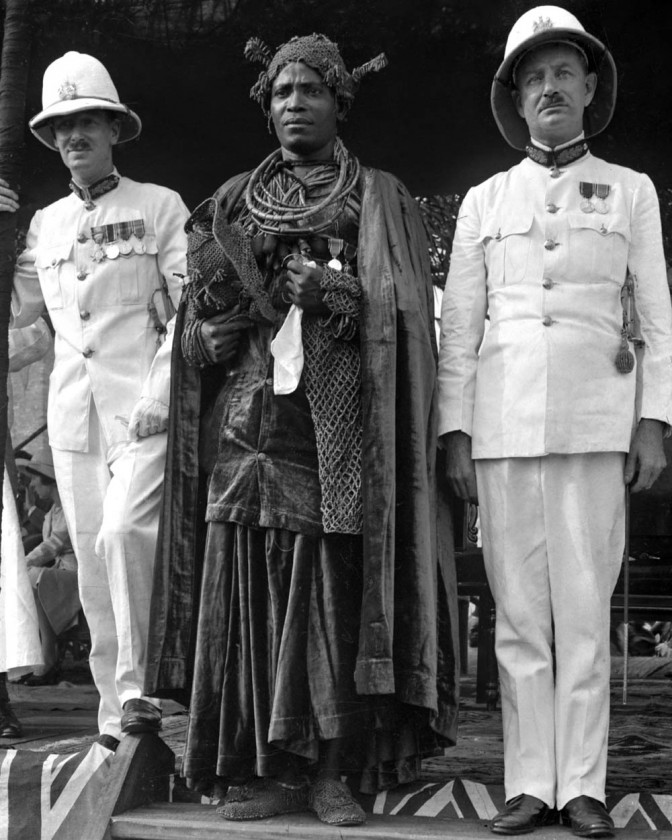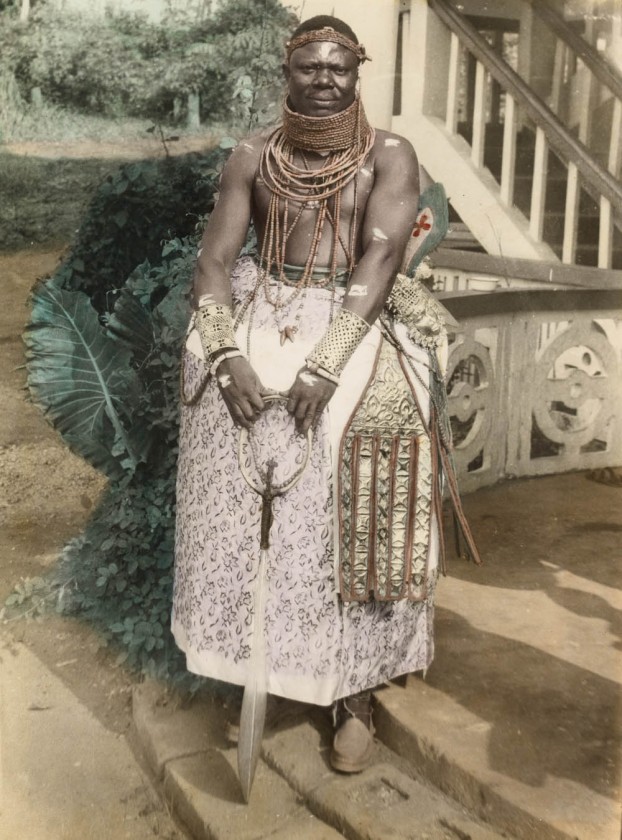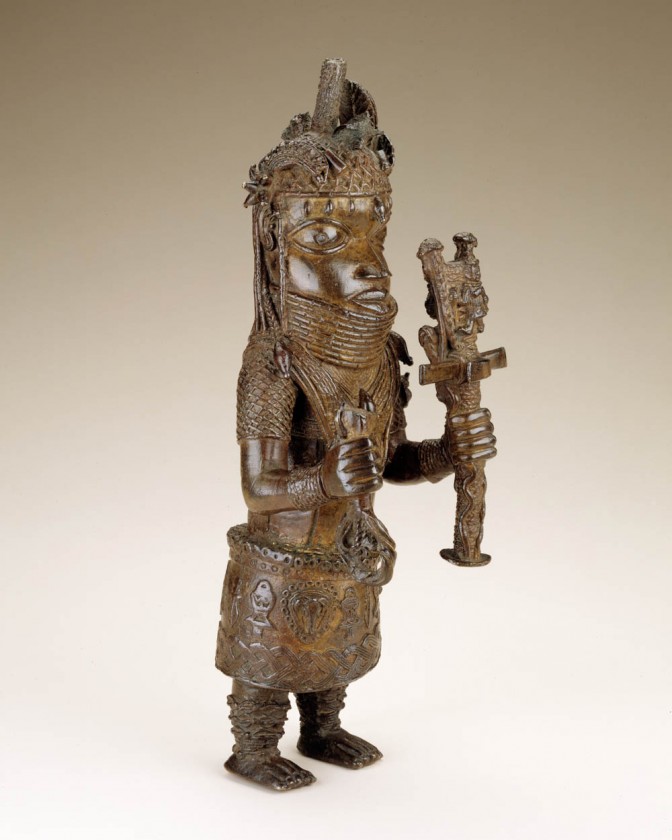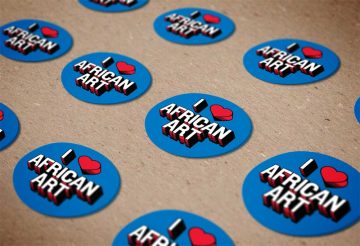Home | History of Benin | Early Photography in Nigeria | S.O. Alonge: The Early Years | Ideal Studio, Benin City | Picturing a New Society | Ideal Studio Portraits | Ideal Studio Setting | Royal Court Photography | Commemorative Objects
Omo n’Oba n’Edo Uku Akpolokpolo, Akenzua II (reign 1933–78) understood the significance of photography in documenting and preserving the 20th-century history and traditions of the Benin kingdom. During his reign, Oba Akenzua reinstituted many social, political, and traditional practices prohibited by the British after the destruction of the royal palace and the exile of Oba Ovonramwen.
In 1933, Oba Akenzua II chose S.O. Alonge to be the first official court photographer. As royal photographer and active member of the Iwebo palace society, Alonge was a loyal servant to the oba. He had privileged access to the palace and documented significant moments in the history of the Benin kingdom and the royal court, including the visit of the Earl of Plymouth in 1938. Alonge documented chieftaincy and title-taking ceremonies, and extensively photographed traditional ceremonies and cultural events. He photographed the iloi, the royal wives of the oba, in full ceremonial regalia and traditional hairstyle with coral beads, called “okuku,” at the palace during the Igue festival.

Benin City, Nigeria
c. 1938
Modern print from glass plate negative
Chief S.O. Alonge Collection
EEPA 2009-007-0038
Oba Akenzua II holds the coral regalia of Oba Ovonramwen, which the British took in 1897 and returned in the mid- to late 1930s. Sir John Macpherson, governor-general of Nigeria, stands on the left.
Visitors to the Royal Court
S.O. Alonge photographed local chiefs and political leaders in Nigeria and important visitors to Benin City.

Benin City, Nigeria
c. 1960
Hand-colored silver gelatin print
38.1 x 30.5 x .2 cm (15 x 12 x 1/16 in.)
Chief S.O. Alonge Collection
EEPA 2009-007-1775
Chief Francis Edo Osagie, the Obarisiuwa of Benin, was a cousin and good friend of Chief Alonge. Alonge hand-colored his portrait to commemorate Chief Edo Osagie’s title-taking ceremony in 1950.

Figure of a king
18th to 19th century
Copper alloy
41 x 17.1 x 15.2 cm (16 1/8 x 6 3/4 x 6 in.)
Gift of Joseph H. Hirshhorn to the Smithsonian Institution in 1966, 85-19-12
The staff in the oba’s left hand gives added power to his pronouncements. It is shaped like a double gong and studded with blades that are similar to the head of a metalsmith’s finishing hammer. The blade of a ceremonial sword in the king’s right hand and a large loop atop his head have broken off. The missing loop had the same form as the handle of the sword.
Queens of Oba Akenzua II
The Benin kingdom practices polygamy and the oba may have many wives. Oba Akenzua II had eight wives, including the youngest, Queen Ohan—a title that refers to the oba‘s spirit or wind. Queen Ohan Akenzua understood the importance of photography in documenting the culture and history of Benin and was a frequent visitor to Alonge’s studio.
Images of the queens and members of the royal family were highly prized and sought out by photographers. As the official court photographer, Alonge routinely provided royal women with copies of his photographs. These images have a place of honor in homes, and family photo albums are valued as sources for genealogies and family histories.

Photographer unknown, c. 1956
Modern print from glass plate copy negative
Chief S.O. Alonge Collection
EEPA 2009-007-0016
Alonge copied historic photographs by other photographers on glass plates to maintain an archival, visual record of significant persons and moments in the history of Benin. Shot by an unknown photographer, a young Queen Ohan Akenzua has wrapped herself in a striped textile to keep warm while visiting England. The chimneys of London are visible in the background.
Omo n’Oba n’Edo Uku Akpolokpolo Erediauwa I
As the first son of Oba Akenzua II, Oba Erediauwa I inherited the throne and became the 38th oba of Benin in 1979. Educated as a lawyer at King’s College, Cambridge University, Prince Solomon Akenzua (as he was known at the time) embraced the modern world of government administration and politics upon his return to Benin. He worked as district officer in the Eastern Nigeria Civil Service and later retired as permanent secretary of the Ministry of Health in 1973.
As traditional ruler of the Edo peoples, Oba Erediauwa I has carried on many of the ritual and spiritual traditions reinstituted by his father. Oba Erediauwa added the modern practice of photography to the skills required to care for the oba‘s crowns, coral bead regalia, ornaments, and weapons.
